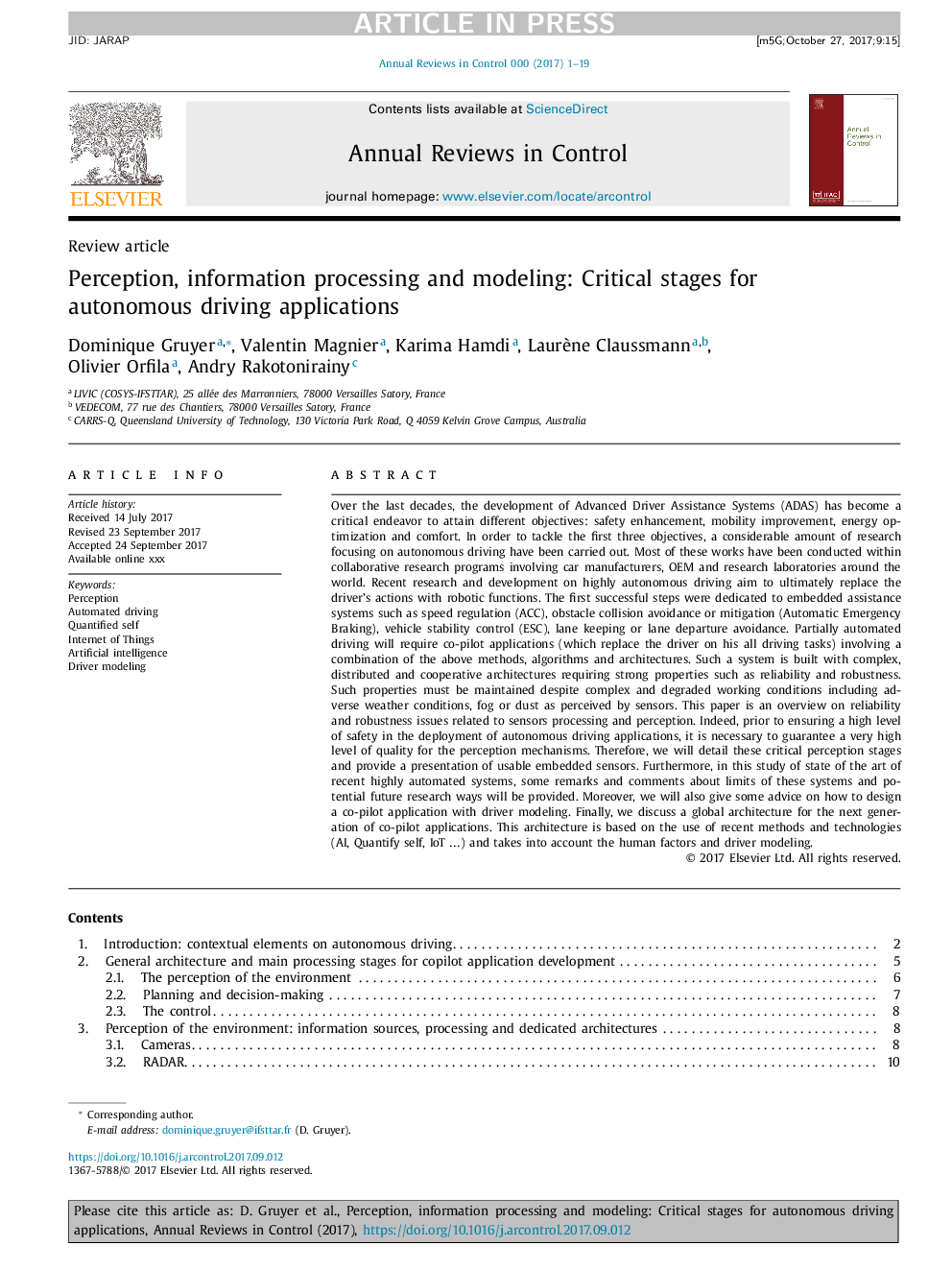| کد مقاله | کد نشریه | سال انتشار | مقاله انگلیسی | نسخه تمام متن |
|---|---|---|---|---|
| 7107853 | 1460586 | 2017 | 19 صفحه PDF | دانلود رایگان |
عنوان انگلیسی مقاله ISI
Perception, information processing and modeling: Critical stages for autonomous driving applications
ترجمه فارسی عنوان
ادراک، پردازش اطلاعات و مدل سازی: مراحل بحرانی برای برنامه های کاربردی رانندگی مستقل
دانلود مقاله + سفارش ترجمه
دانلود مقاله ISI انگلیسی
رایگان برای ایرانیان
کلمات کلیدی
ادراک، رانندگی خودکار خودمحور اینترنت چیزها، هوش مصنوعی، مدل راننده
موضوعات مرتبط
مهندسی و علوم پایه
سایر رشته های مهندسی
کنترل و سیستم های مهندسی
چکیده انگلیسی
Over the last decades, the development of Advanced Driver Assistance Systems (ADAS) has become a critical endeavor to attain different objectives: safety enhancement, mobility improvement, energy optimization and comfort. In order to tackle the first three objectives, a considerable amount of research focusing on autonomous driving have been carried out. Most of these works have been conducted within collaborative research programs involving car manufacturers, OEM and research laboratories around the world. Recent research and development on highly autonomous driving aim to ultimately replace the driver's actions with robotic functions. The first successful steps were dedicated to embedded assistance systems such as speed regulation (ACC), obstacle collision avoidance or mitigation (Automatic Emergency Braking), vehicle stability control (ESC), lane keeping or lane departure avoidance. Partially automated driving will require co-pilot applications (which replace the driver on his all driving tasks) involving a combination of the above methods, algorithms and architectures. Such a system is built with complex, distributed and cooperative architectures requiring strong properties such as reliability and robustness. Such properties must be maintained despite complex and degraded working conditions including adverse weather conditions, fog or dust as perceived by sensors. This paper is an overview on reliability and robustness issues related to sensors processing and perception. Indeed, prior to ensuring a high level of safety in the deployment of autonomous driving applications, it is necessary to guarantee a very high level of quality for the perception mechanisms. Therefore, we will detail these critical perception stages and provide a presentation of usable embedded sensors. Furthermore, in this study of state of the art of recent highly automated systems, some remarks and comments about limits of these systems and potential future research ways will be provided. Moreover, we will also give some advice on how to design a co-pilot application with driver modeling. Finally, we discuss a global architecture for the next generation of co-pilot applications. This architecture is based on the use of recent methods and technologies (AI, Quantify self, IoT â¦) and takes into account the human factors and driver modeling.
ناشر
Database: Elsevier - ScienceDirect (ساینس دایرکت)
Journal: Annual Reviews in Control - Volume 44, 2017, Pages 323-341
Journal: Annual Reviews in Control - Volume 44, 2017, Pages 323-341
نویسندگان
Dominique Gruyer, Valentin Magnier, Karima Hamdi, Laurène Claussmann, Olivier Orfila, Andry Rakotonirainy,
